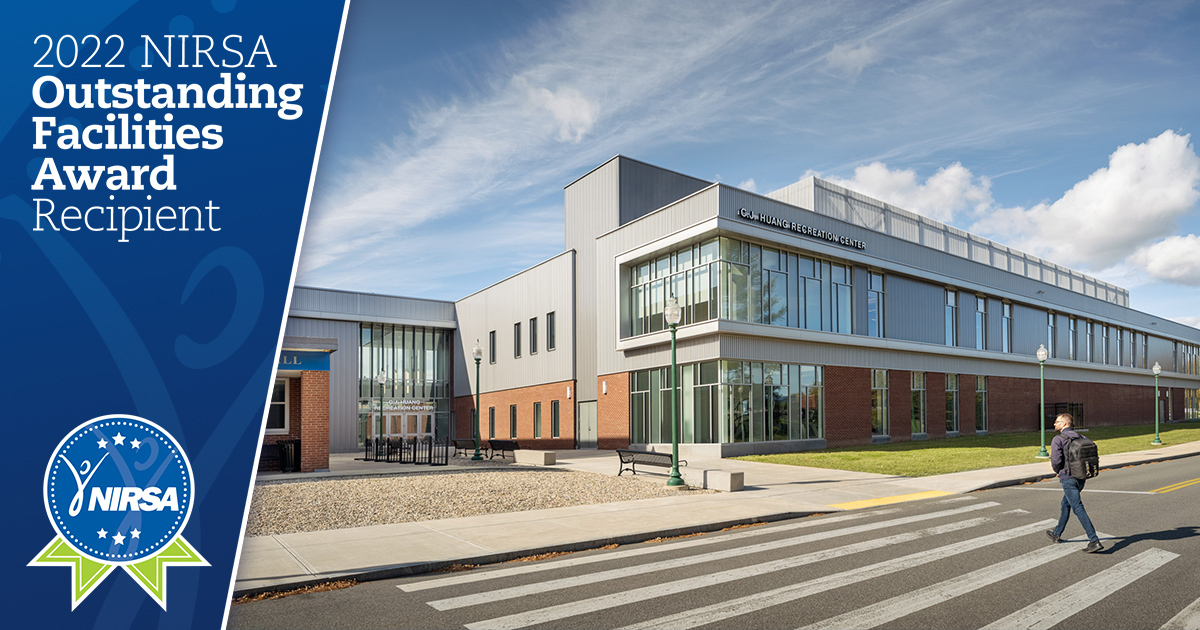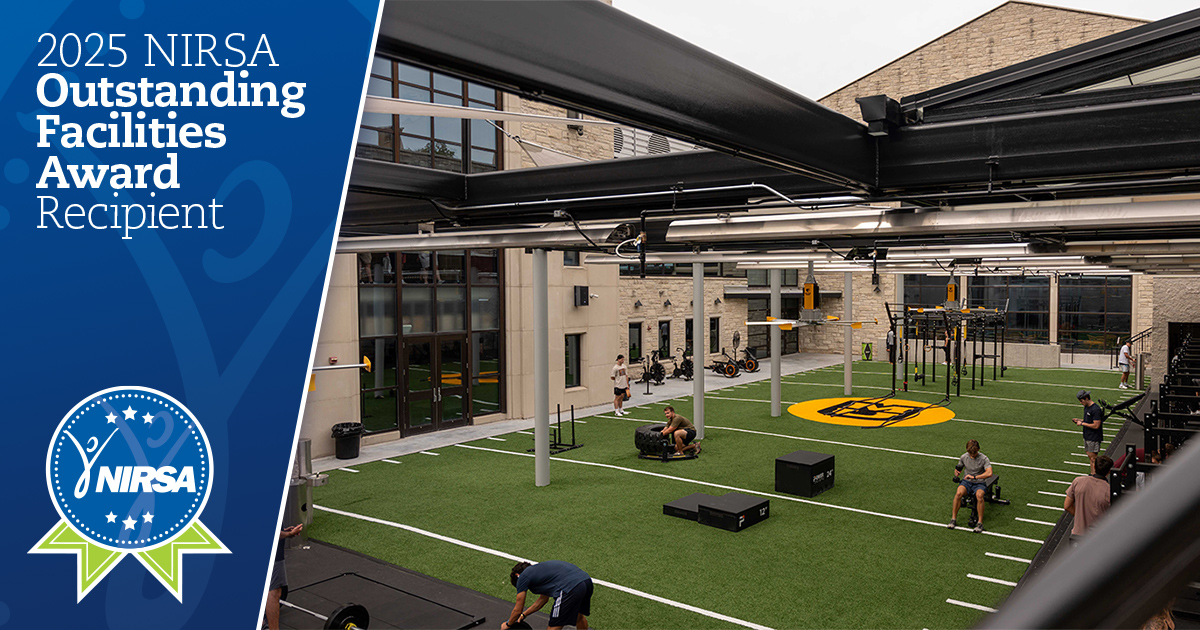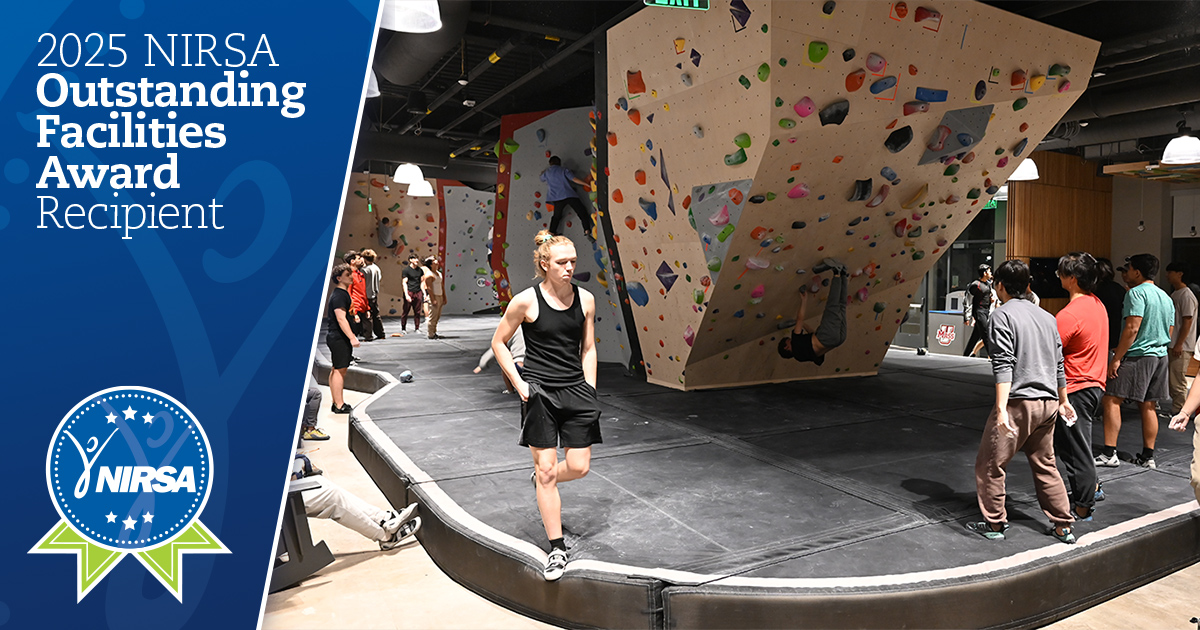Student engagement and building a sense of community are at the core of many campus recreation programs and services. Facilities that encourage a sense of belonging significantly impact student success in and outside of the classroom, contributing to life-long skill development and mental, physical, and emotional wellbeing.
The NIRSA family knows well the role campus recreation plays in creating positive student experiences and understands that updated facility design can be a gamechanger when it comes to building community among rec center users and student staff alike. That's why NIRSA member school Central Connecticut State University's new rec center intentionally unified student rec and wellness programs into one centralized facility. The Association recognized CCSU's dedication to the success of its students through community engagement and holistic learning by honoring its updated facility with a 2022 Outstanding Facilities Award.
About the Huang Center
Located on a 165-acre campus in New Britain, Central Connecticut State University is home to more than 10,000 students. The largest university within the Connecticut State Colleges and Universities system, CCSU needed a better way to deliver recreation programming to its students, faculty, and staff. The C.J. Huang Recreation Center offers a 58,000 square foot addition off the school's 1970s-era sports facility Kaiser Hall, home to Blue Devil Athletics.
For the first time in recent history, all recreation and wellness programming is housed in a singular, prime location shared in part with athletics and academics. Construction of the building cost $18,000,000. The building centralizes previously nominal recreation space that was spread across satellite locations—often in isolated areas of academic or residential buildings—and which competed with D1 athletics in the Kaiser Annex's 1991, air-supported fabric structure "The Bubble."
"One of the primary goals established in CCSU's Strategic Plan for 2030 focuses on the assurance of student success, particularly around student engagement and the enhancement of the campus community by 'encouraging participation in clubs, sports, and campus events,'" Scott Kazar, CCSU Recreation Specialist, explains. "Since the building's completion, the ability of CCSU's Campus Recreation Department has far exceeded our expectations to expand our programming and engage students in a warm and welcoming environment."
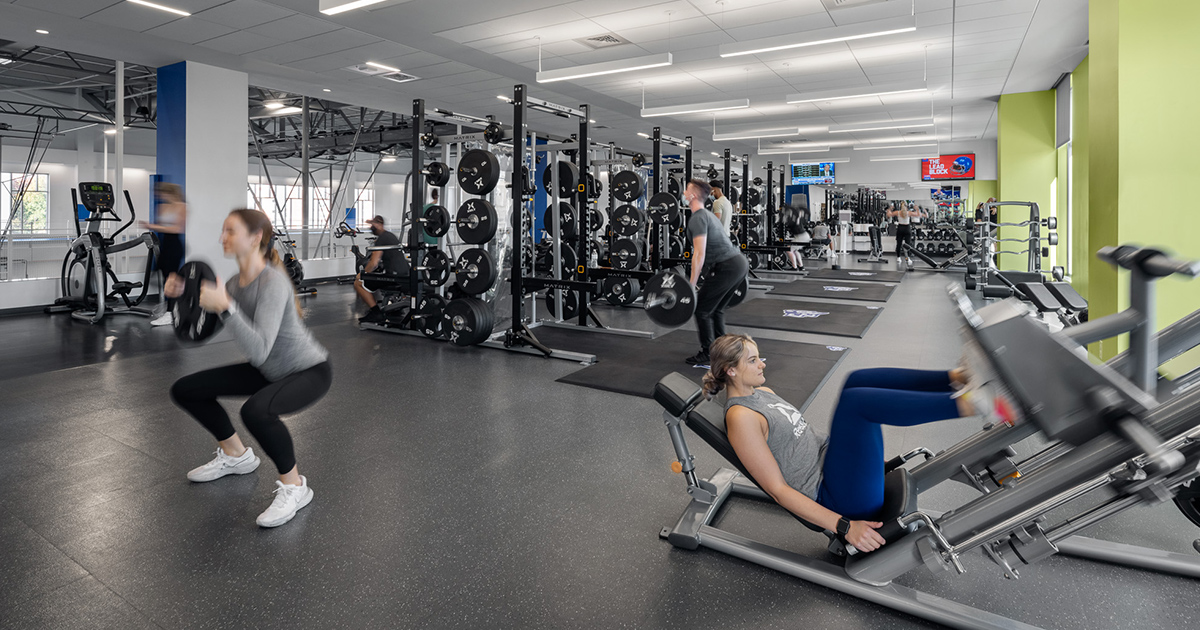
The centralized structure allows the rec center's staff to engage more students on a day-to-day basis in meaningful healthy lifestyle programming, with quantifiable outcomes for student engagement and community. Since its opening in late January 2020, the facility has seen its daily swipes jump from 300 to more than 1,000. Students employed by the Campus Recreation Department or who are involved in club sports boast a 99% retention rate (versus 81% for students who are not) and a 75% graduation rate (versus 42%) for the same student groups.
Collaboration between the Facilities and Recreation departments intentionally informed the project's overall design, and the project's clean, modern design has already made a considerable impact on CCSU's student staff. A single point of entry and dedicated reception area aid the team's ability to monitor potential safety issues. "Access and entry to the facility immediately conveys our intent as a recreation department to provide high quality programs and spaces to our campus community," Scott says.
"Users can quickly and intuitively get a sense of the spaces available to them—from the large multi court gym visible just past the reception desk to the elevated running track ringing the courts which is open to large fitness neighborhoods above and below," Scott adds. Greater flow and connectivity between spaces also optimizes functional program space.

The new, superior operational structure has bolstered camaraderie and pride among student employees, all of whom are automatically enrolled in a leadership & management program that expands their job-related skills and personal development through enriched, experiential education. The building expansion also features a dedicated employee room for secure storage of student belongings.
Other key spaces in the Huang Center include:
- Spacious entry lobby with comfortable seating, making the building a campus social hub
- Five zones of cardio, weights, and fitness, including a blue-turfed functional fitness area
- Two dedicated fitness studios
- A three-multipurpose-court gym
- Court-level and elevated running tracks
- Equipment and laundry space and extensive storage spaces distributed throughout the building
- VIP/event room overlooking the competition basketball court
The rec center was made possible by a $6.5 million estate gift from the building's namesake, the late Dr. Huang Chang-Jen. In addition to funding the expansion, his gift expands scholarship programs and student exchange with a college in China, which commenced with a gift from Dr. Huang more than 30 years ago.
"The C.J. Huang Recreation Center has created a strong community of students, faculty, and staff devoted to wellness and recreation," explains Kaylee Roux, CCSU Assistant Recreation Specialist. "This award reaffirms the positive environment created and enables this community to feel proud and excited for the future."
About the lead architect
The centralized hub for recreation and wellness at CCSU is an outstanding example of lead architect Sasaki's collective and values-driven approach to design.
"In centralizing CCSU's recreation programs into a single destination, it was really important to create an atmosphere that was warm and welcoming, yet active and kinetic," says Bill Massey, AIA, LEED AP, Principal Architect at Sasaki. "We knew there would be many new users and we wanted to eliminate any sense of insecurity or mystery around how a first-time visitor might experience the building: Ultimately we want them to come back and spread the word about the great programming that CCSU offers it's campus community."
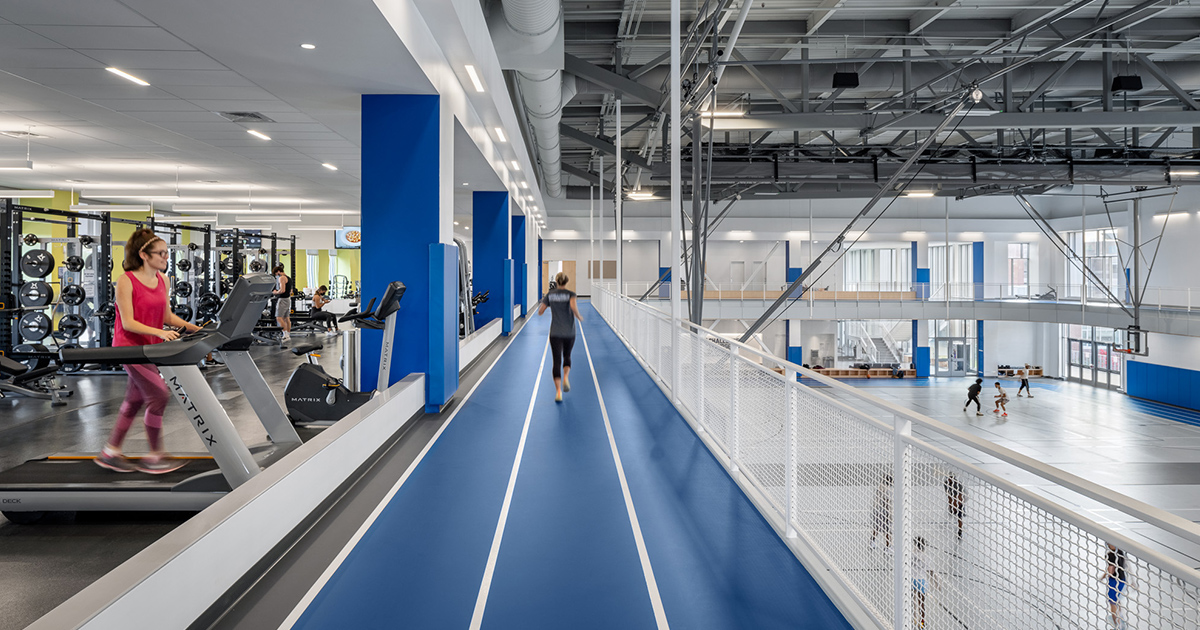
He adds, "despite budget challenges and the complexity of expanding off of an existing athletics facility, we were able to provide an open, fluid entry sequence that brings you to a welcoming point of reception that simultaneously offers great views into the building. Entering the facility giving users an intuitive sense of the different fitness and wellness options they can explore and experience. By all accounts, usership has significantly exceeded expectations, so it's great to feel like we succeeded."
For the firm, which has been a NIRSA member for more than 25 years, sports and recreation venues enrich lives through shared experience; they bring people together to play, train, compete, and cheer.
"From the creation of new sports districts to the design and implementation of indoor and outdoor facilities for campuses and communities around the world, our work promotes teamwork, social interaction, personal health, and wellbeing," Bill says.
Driven by the pursuit of "better design, together," Sasaki's work encourages personal growth and demonstrates a commitment to history and diverse perspectives while maintaining a curiosity about new ways of thinking. The firm's founder, Hideo Sasaki, was an early champion of bringing diverse design perspectives together to strengthen ideas and outcomes. Sasaki intentionally invited multiple thinkers to the table and that table has only expanded over the years to bring more people around it.
With more than 800 awards in its 65-plus-year history, Sasaki strives to "define the future of place" with design practices that celebrate diverse perspectives, blend disciplines, and thrive on evolution. It was honored with a NIRSA Outstanding Facilities Award for its contributions to the C.J. Huang Recreation Center—one of three Sasaki projects to receive the award in 2022.
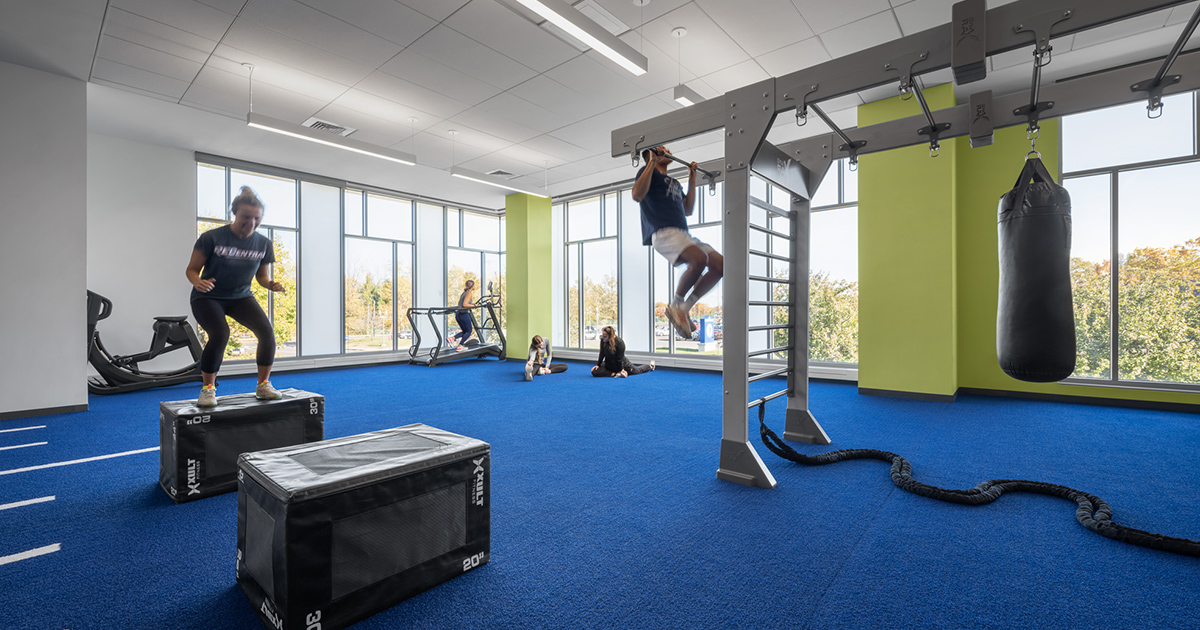
"We've been proud members of NIRSA for over two decades, and we pay close attention to the Facilities Awards every year, always submitting one to three projects of our own," Bill says. "So many excellent projects get submitted every year, so to have one of our projects recognized is a reason to celebrate. It reflects the many hours and decisions that go into realizing a particular project at the highest level, and it's something that we at Sasaki and our institutional recreation department partners celebrate as a significant achievement. It's a meaningful recognition of our collective efforts."
About NIRSA's Outstanding Facilities Awards
The annual NIRSA Outstanding Facilities Awards recognize the innovative designs of new, renovated, or expanded collegiate recreational facilities of NIRSA member institutions. Winning facilities are considered a standard by which other campus recreation facilities should be measured, and from which others can benefit.
Applications for the 2023 class of NIRSA Outstanding Facilities Award recipients will open in the fall. Eligibility guidelines, selection criteria, and entry fee details can be found on the NIRSA website.
- For more information, contact NIRSA Director of Membership Sarah Leskovec.


